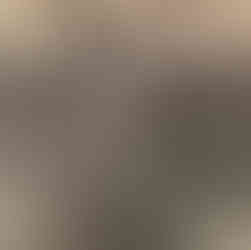SAB 90 - Andrei Kramarevsky
- Lauryn Johnson

- Jan 19, 2024
- 4 min read

Who was Andrei Kramarevsky?
“Dancing came from my family. My father was a ballet master; my mother was a dancer. All through my childhood I was close, very close, to my mother. I remember being in the Minsk Theatre—she was the prima ballerina there—watching her dance in The Red Poppy. […] I remember watching her with such pleasure, and thinking I would never be able to dance like that.
“My father wanted me to become a dancer because he thought I had talent: he said I had an actor’s reactions. And I was a very physical child, very strong, and I moved well naturally. I didn’t have any big desire to dance. I wanted to be a scientist.
“From nine to twelve I was in the Bolshoi Theatre School. In those first years of training my teachers worked only on technique; it was as if expression didn’t exist. It was painful and dull and I felt a lot of resentment toward the work. […] When I was just in the classroom, doing exercises, it wasn’t very interesting, but on the stage I felt that communication with the public. Then, dancing became a pleasure.
“When I arrived in this country I went straight to the School of American Ballet. I didn’t need anyone to recommend it to me. […] I just came and showed them pictures and to introduce myself. I didn’t think I’d be accepted. But then the director, Natalie Molostwoff, said, ‘Today we have a teacher who is ill. Can you give a class right away?’ Well what was there to do but do it? There was a very good reaction. Dancers applauding very warmly at the end. […] Then, the very same day, very late, they telephoned me and said, ‘Mr. Balanchine is very interested. He wants to see you teach.’”
—Andrei Kramarevsky, translated from Russian by his son Alexander. Appears in Dance Magazine, November 1978
(left) Kramarevsky performing with the Bolshoi Ballet as Nur-Ali in Rostislav Zakharov’s The Fountain of Bakhchisarai”. Seen in Dance Magazine.
(center) Kramarevsky as Chinese Doll & Olga Lepeshinskaya as Swanhilde in Coppélia at the State Bolshoi Theatre. Photo by Vassily, via Sputnik, 1957.
(right) Kramarevsky as Harlequin in “The Bronze Horseman”
Andrei Kramarevsky, fondly known as Krammy, taught at SAB from 1976 to 2018. Here we get an inside look at one of his adagio classes:
“One moment [a female student] is whirling in front of him in pirouette; in a split-second hoist she’s sitting on his shoulder waving her arms decoratively. ‘It’s all here,’ he says slapping his thighs with his free hand, while the other absent-mindedly holds her steady in her precarious perch.
“Although the girl has the showy roles in this sort of [adagio] work, Kramarevsky’s partnering instruction uncovers the truth; that her performance depends largely on the boy’s deftness; he must become as unnoticed and efficient a porteur as a Japanese stagehand. While the boys are floating and zooming the girls around as if they were paper airplanes, Kramarevsky moves from couple to couple, urging the young women to “feel arms,” which they seem to fling wherever it’s convenient in their chancy effort to stay aloft, insisting that the partners maintain the kind of eye contact that belongs to lovers, begging them to extend the movement beyond the boundaries of their bodies and to give it breath.”
—Tobi Tobias in Dance Magazine, November 1978
(left) Christopher d’Amboise lifting Barbara Seibert, Krammy assisting. Photo by Lois Greenfield, 1978. Dance Magazine
(right) Krammy and students Peter Stark, Romy Karz, Kathleen Tracey. Aage Thordahl, Nilas Martins, James O’Connor. Photo by Paul Kolnik.
What was Krammy’s philosophy on technique?
“Having technique does not mean you are an artist. Perhaps you can assume a pose—say an arabesque—almost perfectly. The line is immaculate, but it is still nothing. Because, you see, each pose must stop, not at the limits of the body, but somewhere beyond that. It must stretch a little past what the eye can define. The torso must breathe. The eyes must speak. An arabesque is not just nice arms and legs stuck into space.
“Technique is nothing but a means of expression. And this quality—of humanity—must come from within the dancer. He must have a big heart, and a spirit that goes out to the public. […]
“You ask if this can be taught. It is necessary to teach it, but not everyone can learn it. In the end it’s the nature of the dancer that makes it happen or not. Still a teacher must always ask for this quality, and there should be a method in his technique to explain it, because it is essential: the point in dancing is not WHAT is done—how many turns, how high the leap—but HOW it is done.”
—Andrei Kramarevsky, translated from Russian by his son Alexander. Appears in Dance Magazine, November 1978

Kramarevsky partnering Simone Schumacher. Darci Kistler in background. Photo by Paul Kolnik.
Below you can read the full article from Dance Magazine about Kramarevsky
























Comments